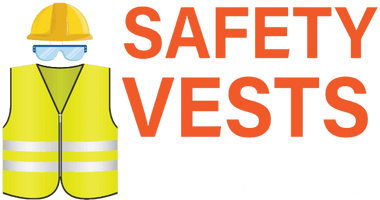
What Are Coveralls Used For?
In a wide range of environments, coveralls are made to provide full body coverage and safety. They are an essential component of personal protective equipment (PPE). Their primary function is to protect workers from occupational hazards such as dirt, sparks, chemicals, extreme temperatures, and potential exposure to infectious materials. To make them a must-have in various job roles, the uses of coveralls span across different industries.
Applications: Coveralls Are Used In
1. Construction and Roadwork
Workers on construction sites are regularly exposed to dust, debris, and sharp tools. With reflective tape and high-visibility colors, coveralls help protect their skin and clothing while also enhancing visibility.
2. Manufacturing and Industrial Settings
In factories and industrial plants, coveralls are used to safeguard against mechanical injuries, chemical splashes, oil spills, and flying particles. Flame resistant coveralls are crucial in areas with welding, grinding, or cutting tasks.
3. Oil and Gas Industry
The oil and gas sectors rely heavily on coveralls to guard workers from fire hazards, hot liquids, and flammable gases. This safety gear is often certified to meet NFPA 2112 or NFPA 70E standards.
4. Agriculture and Farming
Coveralls are used by farmers to protect themselves from fertilizers, pesticides, animal waste, and rough working conditions. These garments are often lightweight and breathable to ensure comfort during extended wear.
5. Food Processing and Sanitation
By preventing cross-contamination in hygiene-sensitive environments like food processing plants, coveralls help maintain cleanliness. Employees wear them to keep their bodies and clothing covered while ensuring a sterile environment.
6. Emergency and Rescue Operations
Coveralls are worn by firefighters, hazmat teams, and other emergency responders to protect against fire and toxic substances. These workwear are often equipped with multi-layer protection and moisture-wicking liners.
7. Automotive and Mechanical Work
Coveralls are also used by auto technicians, welders, and mechanics to prevent oil, grease, and metal fragments from damaging their everyday clothing.
How Coveralls Are Different from Overalls
While the terms "coveralls" and "overalls" are often used interchangeably, they are distinctly different garments:
-
Coveralls are full body garments with sleeves, legs, and a front zipper or snap closure to provide complete coverage from neck to ankles. They are designed for complete body protection.
-
On the other hand, overalls are sleeveless garments that cover the torso and legs but leave the arms and shoulders exposed. For added convenience, they are ideal for lighter tasks and are often worn over regular clothing.
Coveralls provide more comprehensive protection to make them ideal for hazardous work environments, while overalls are suitable for tasks that require more flexibility and less exposure to risk.
Different Materials of Coveralls
Coveralls come in a variety of materials, each selected for specific work environments and safety needs:
-
Cotton: Soft, breathable, and suitable for light industrial tasks. Flame-resistant cotton variants are commonly used for welding and electrical work.
-
Polyester-Cotton Blends: Durable and easy to wash, ideal for general use in automotive, maintenance, or construction jobs.
-
Nylon and Synthetic Fabrics: Water-resistant and quick-drying, these materials are best suited for outdoor or wet environments.
-
Polypropylene: Lightweight and disposable, frequently used in healthcare, cleanrooms, or food processing facilities.
-
Aramid Fibers (e.g., Nomex): Highly flame resistant, used in firefighting, electrical, and oil & gas applications.
-
PVC-Coated Fabrics: Offer chemical and waterproof resistance, suitable for chemical handling and sanitation jobs.
It depends on the hazards of the work environment, climate conditions, and required compliance standards while choosing the right material for coveralls.
Why Coveralls Are Essential in the Workplace
-
Safety Compliance: Many industries are regulated by standards such as OSHA, NFPA, and ANSI that require the right PPE based on hazard assessments.
-
Reduced Contamination Risks: In industries like healthcare and food processing, coveralls prevent contamination and help maintain sterile workspaces.
-
Durability and Cost Efficiency: Quality coveralls offer long-term durability and reduce the need for frequent clothing replacements.
-
Enhanced Professionalism: To the workers, coveralls provide a clean and professional appearance.
Coveralls are essential protective gear made for a wide array of hazardous environments. From construction sites and chemical labs to agriculture and emergency services, the applications coveralls are used in demonstrate their unmatched versatility and necessity. It is important to understand the different materials of coveralls and how they differ from overalls to ensure workers are equipped with the right protection for their specific needs.
Frequently Asked Questions
When do you need to wear coveralls?
You must wear coveralls when working in areas that contain chemicals, flames, dirt, or biological contaminants to ensure full-body protection.
Which safety gear is more suitable for construction work: coveralls or overalls?
When full-body protection is necessary, coveralls are more appropriate for construction, whereas overalls are ideal for lighter tasks with lower exposure risks.
How to choose the right color for industry work for coveralls?
Select hues according to industry norms and visibility: dark hues for mechanical or industrial tasks, white for cleanrooms, and high-vis orange or yellow for construction.
What is the main purpose of wearing coveralls?
To ensure the wearer remains safe, clean, and compliant with safety standards, the main goal is to offer complete protection from workplace hazards.
